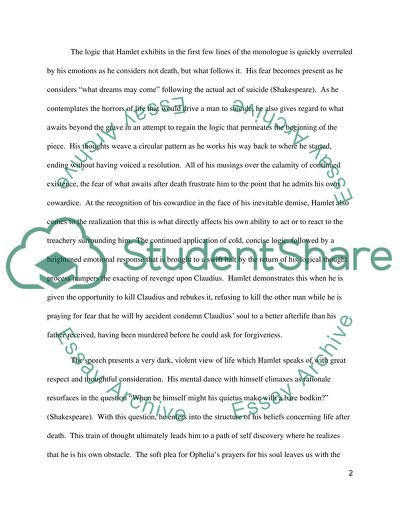Cite this document
(“Logic and Emotion in Hamlets Soliloquy Essay Example | Topics and Well Written Essays - 1000 words”, n.d.)
Retrieved from https://studentshare.org/literature/1549657-logic-and-emotion-in-hamlets-soliloquy
Retrieved from https://studentshare.org/literature/1549657-logic-and-emotion-in-hamlets-soliloquy
(Logic and Emotion in Hamlets Soliloquy Essay Example | Topics and Well Written Essays - 1000 Words)
https://studentshare.org/literature/1549657-logic-and-emotion-in-hamlets-soliloquy.
https://studentshare.org/literature/1549657-logic-and-emotion-in-hamlets-soliloquy.
“Logic and Emotion in Hamlets Soliloquy Essay Example | Topics and Well Written Essays - 1000 Words”, n.d. https://studentshare.org/literature/1549657-logic-and-emotion-in-hamlets-soliloquy.


